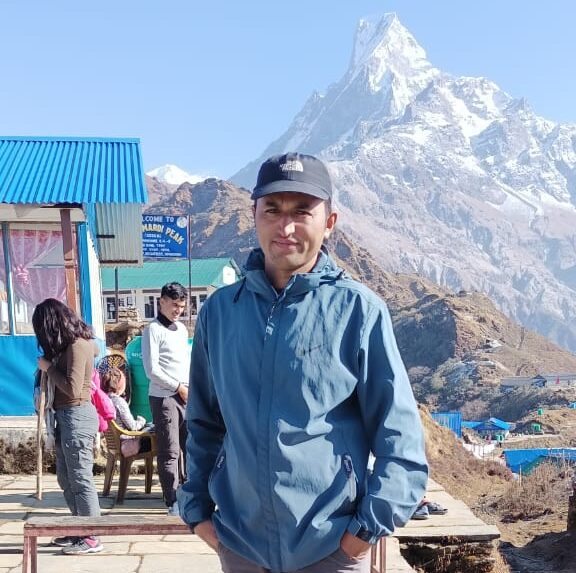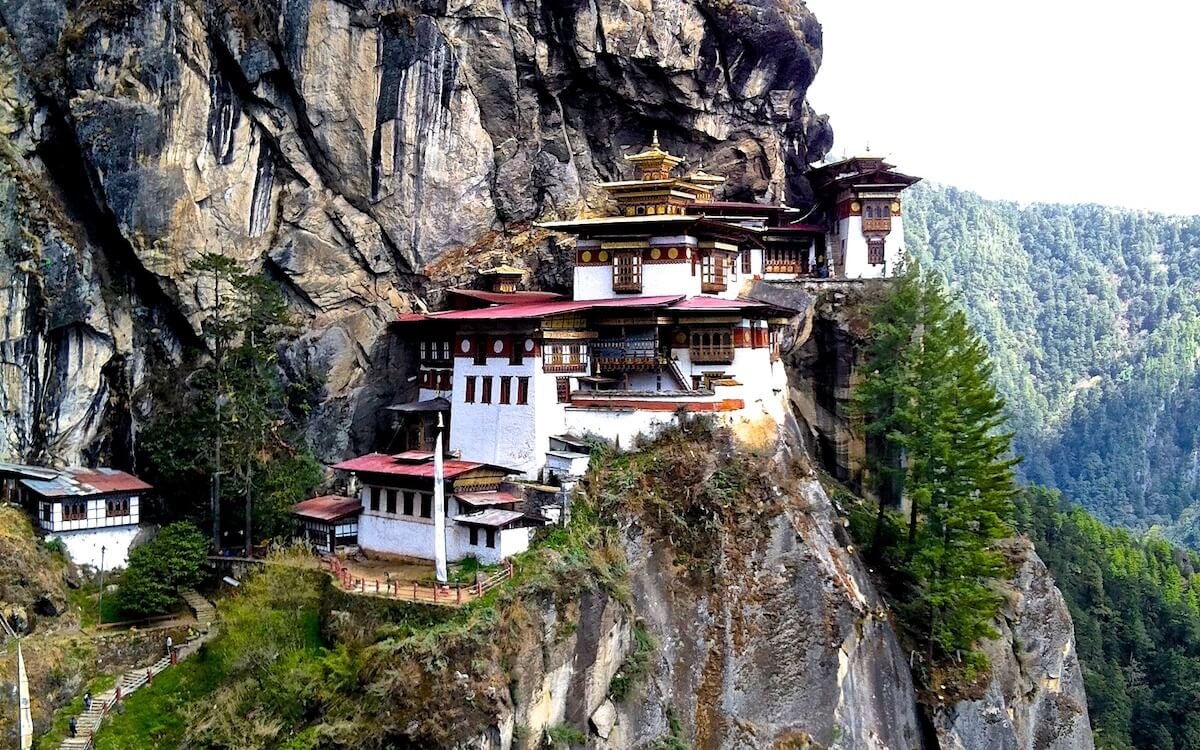
As the world advances with modernization and technology, Bhutan has its own uniqueness and beauty rooted in its culture and religion. You’ll be amazed by the interesting facts about Bhutan as you discover through this blog.
Bhutan is a culturally rich country bordered by India and China. The nation is a constitutional monarchy, with the king serving as the head of state and the prime minister leading the cabinet as the executive branch.
Still, to this 21st century, the nation is known to be the mystical Kingdom with its alluring charm and mystery. Be it a travel enthusiast or a history lover, you’ll be amazed to learn the collision between history and modernity.
So, let’s get started with the ‘15 Interesting Facts About Bhutan’ without any delay.
Bhutan is the Only Carbon Negative Country
Bhutan is so incredible! Did you know it’s the world’s first carbon-negative country? That means their forests actually absorb more carbon dioxide than the country produces. Wild!
The constitution says Bhutan has to keep at least 60% of its land covered in trees. Right now, it’s at 70% forest coverage. The government and people really care about planting trees. One time, 49,672 trees were planted in just one hour – that’s a crazy record!
Archery is the National Sport of Bhutan
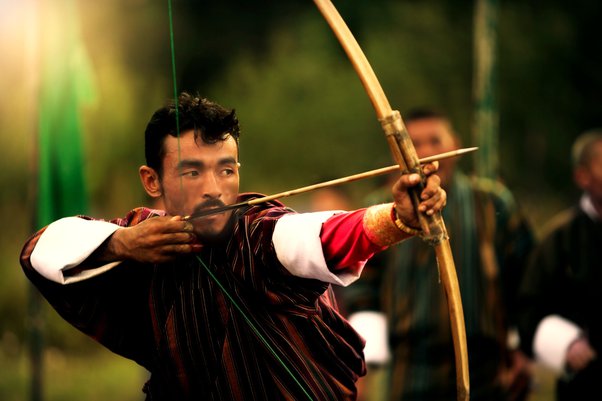
The country made archery the official national sport in 1971, the same year they joined the United Nations. Archers in Bhutan make special bows and arrows from bamboo. They take archery really seriously and have competed in the Olympics since 1984.
You can go to archery tournaments in Bhutan and see all the colorful outfits, enjoy music, and dance, too. It’s not just the sport; it’s a big part of the culture.
Bhutanese Name Of Bhutan
Did you know Bhutan’s local name is “Druk Yul” – it means “Land of the Thunder Dragon“! The thunder dragon is connected to Bhutanese culture and history.
The name “Druk Yul” reflects Bhutan’s landscape, heritage, and culture. Back in the 17th century, a Buddhist Lama named Ngawang Namgyal helped unite Bhutan. People thought Ngawang Namgyal’s thunderstorms were a sign of help from the thunder dragon.
The thunder dragon represents power, protection, and divine guidance in Bhutanese tradition. That’s why the thunder dragon is shown on Bhutan’s national flag, too.
Television Wasn’t Allowed Until 1999
Can you believe TV wasn’t allowed in Bhutan until 1999? Bhutan wanted to protect its culture and not let TV change things too much. They were careful about modernization. Bhutan was actually the last country to allow TV finally!
Now, TV is used in a balanced way in the nation. They control how much it’s watched so Bhutanese culture stays preserved. Most countries got TV decades before. Waiting so long makes Bhutan unique.
Bhutan Measures Progress by Gross National Happiness (GNH)
Bhutan uses something called Gross National Happiness to measure progress instead of Gross Domestic Product like other countries. Jigme Singye Wangchuck, Bhutan’s fourth King, started it in the 1970s to focus on the well-being of the people.
So Bhutan works on things like free healthcare, education, environment protection, and sustainable tourism to make people happier.
They build a harmonious society and support spiritual beliefs too. Bhutan cares about emotional health as part of progress. From 2010 to 2022, the happiness levels went up in surveys.
Bhutan values happiness more than just money and economic growth. Focusing on well-being seems fantastic. Bhutan shows there is more to success than GDP.
Traditional Attire (Driglam Namzha) of Bhutan
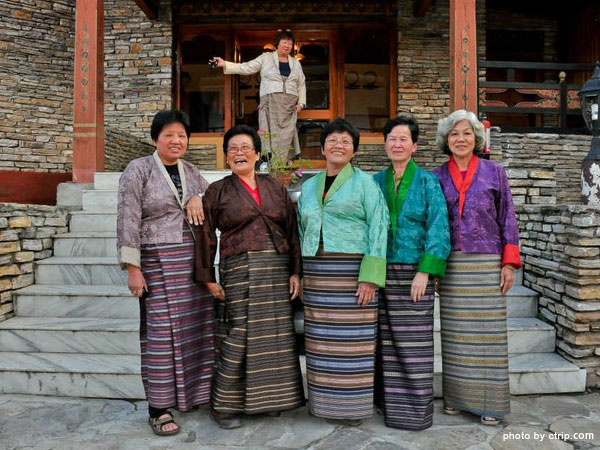
The traditional clothes in Bhutan make it stand out! Men wear an outfit called a gho. It’s a knee-length robe that wraps around their body and is secured with a belt. Women wear a dress called a kira or kera. It’s an apron-like ankle-length dress that is super comfortable. Bhutanese women wear the kira most of the time.
To preserve their heritage, Bhutan made it mandatory for all citizens to wear the traditional gho and kira outfits for formal occasions. However, it’s not for everyday wear. They have a policy called Driglam Namzha that maintains Bhutanese identity.
No Traffic Lights in the Country
Get this – there are no traffic lights at all in the capital city of Thimpu, Bhutan! Instead, police officers manually direct traffic at intersections. They use fun, acrobatic gestures to signal when cars should stop or go.
Having no traffic lights was a deliberate choice for Bhutan. The country wanted a human-focused approach to develop Thimpu, not just technology running everything. Manual traffic control helps protect Bhutanese culture and the environment, too.
It’s really neat Bhutan decided to keep things low-tech. Most big cities rely on traffic lights to prevent chaos. But Bhutan shows you can build community and safety without so much technology.
Prime Trekking and Adventure Hub
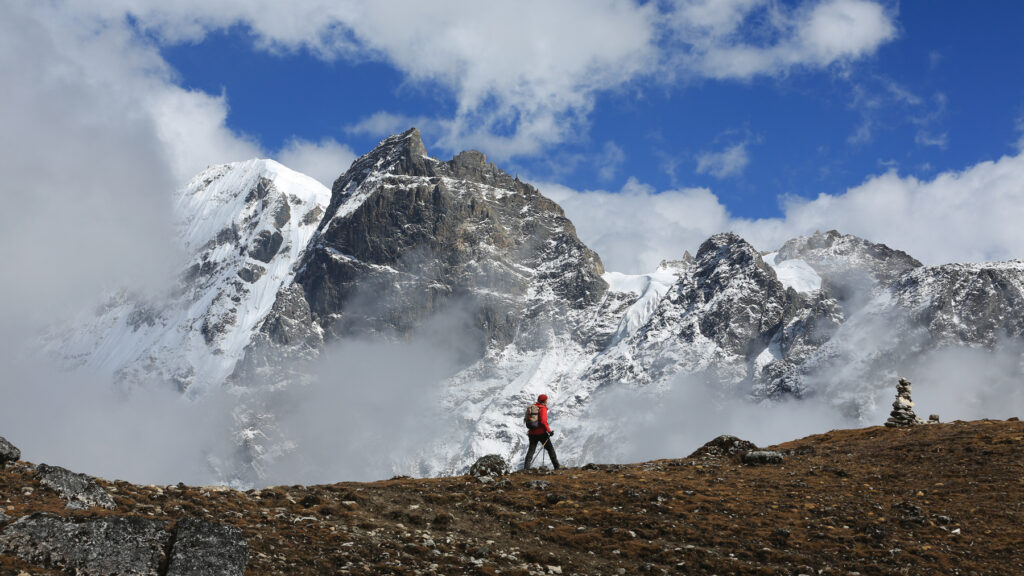
Bhutan is like the ultimate adventure hub! It has amazing landscapes from majestic Himalayan mountains to deep forests and valleys.
There are so many options for trekking trips. The Snowman Trek is considered one of the world’s toughest treks. Jomolhari Trek takes you to the base camp of a huge mountain.
Bhutan’s cultural heritage makes exploring there even more extraordinary. You can visit ancient monasteries and sacred sites like the Tiger’s Nest. It just looks so peaceful! The capital, Thimpu, has lots to see, and Bumthang Valley is known for its spiritual culture.
With epic mountain scenery, challenging treks, peaceful temples, and rich history, Bhutan has it all. Going on a trekking or adventure trip in Bhutan would be incredible.
Trekking there would test your limits while immersing you in a one-of-a-kind culture. Bhutan offers adventures unlike anywhere else!
Prioritizing Well-Being with Sustainable Development Fee (SDF)
Bhutan charges international tourists a $100 Sustainable Development Fee (SDF). This fee funds projects that align with Bhutan’s values like environment protection, social welfare, and cultural preservation. The SDF used to be $200 but was lowered to $100 until 31st August of 2027.
Charging tourists an SDF is a creative way for Bhutan to raise money for causes that improve citizens’ well-being. The projects supported by the fees tie into Bhutan’s Gross National Happiness model of progress. Happy citizens are the goal, not profit.
It’s astonishing how the SDF makes tourism directly support Bhutan’s development vision. The fees ensure visiting Bhutan is sustainable. This unique funding approach benefits both tourists and citizens. Tourists get to visit a beautiful kingdom committed to its culture.
The Takin is Bhutan’s National Animal
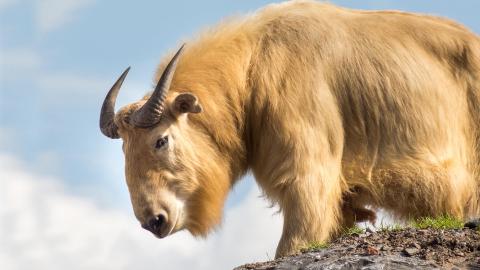
The takin is a really unique animal that was named Bhutan’s national animal in 2005. It looks like a mix between a cow and a goat! According to legend, a Tibetan saint named Drukpa Kunley, in the 15th century, put the head of a goat on the body of a cow and created the takin.
These furry creatures have thick necks, arched noses, and short, muscular legs. Takins eat bamboo and live way up high in the mountains at 4000 meters. They can weigh up to 400 kg! Takins move around in herds, and kind of resemble mountain yaks from Tibet.
Bhutanese People Believe Yeti Exists
In Bhutan, the Yeti is called the Migoi. It’s a famous creature from Himalayan folklore thought to roam the mountains. Known as the Abominable Snowman in Western culture, many Bhutanese believe the Yeti is a real animal. They see the hairy Yeti as a guardian against evil spirits.
The Yeti was first featured on Bhutanese stamps back in 1966. Even now, belief in this snow beast remains common. Bhutan even named its toughest trekking route, the Snowman Trek, after the Yeti!
The Yeti is an important cultural symbol representing Bhutan’s mystical, mountainous landscapes. Whether real or mythical, the Yeti is a beloved part of Bhutanese traditions and adventurous spirit. This mysterious creature captures imaginations worldwide.
Houses Decorated with Phalluses for Fertility and Luck
You might be surprised to see houses in Bhutan decorated with phalluses! These penis carvings are considered symbols of luck and protection from evil spirits. In Bhutanese culture, phalluses represent fertility, power, and good fortune.
Phallus art is found in paintings, sculptures, and carvings across Bhutan. You’ll see penis art on building walls, doorways, rooftops, signs, and displays.
One famous example is Chimi Lhakhang temple, covered in hundreds of phalluses art. It was dedicated to a 15th-century Buddhist master, Lama Drukpa Kunley, known for his sexual energy.
Couples visit the fertility temple for blessings and luck-conceiving children. The phallus symbols may make you giggle at first! But they have deep religious meaning in Bhutan. Bhutan’s unique phallus folk art makes the kingdom wonderfully surprising.
Restriction on Climbing High Peaks
Bhutan has restricted climbing certain high mountains to preserve their sanctity and protect the natural environment. Some peaks over 6000 meters are off limits for cultural reasons.
The tallest mountain, Gangkhar Puensum, at 7570 meters, has never been fully summited! Climbers tried before 1994, but then a ban was imposed.
Gangkhar Puensum holds the record as the highest unclimbed mountain in the world. The ban preserves the peak for future generations and respects sacred Buddhist beliefs. Any climbers would need government permission and must follow strict rules.
Bhutan: Untouched by Colonization
Bhutan is one of the few countries that was never colonized. It maintained independence while regions around it came under European and Asian rule. There was a British mission. However, the Treaty of Sinchula was made between Bhutan and the British. The treaty was to agree not to interfere with Bhutan’s internal affairs.
Later, independent India honored that treaty too. Bhutan’s remote, mountainous geography helped it stay autonomous. The kingdom also had strong leadership that kept outside powers at bay. Buddhism shaped a peaceful society with less interest in expansion.
Tigers Nest Monastery Clings to a Cliff in Bhutan
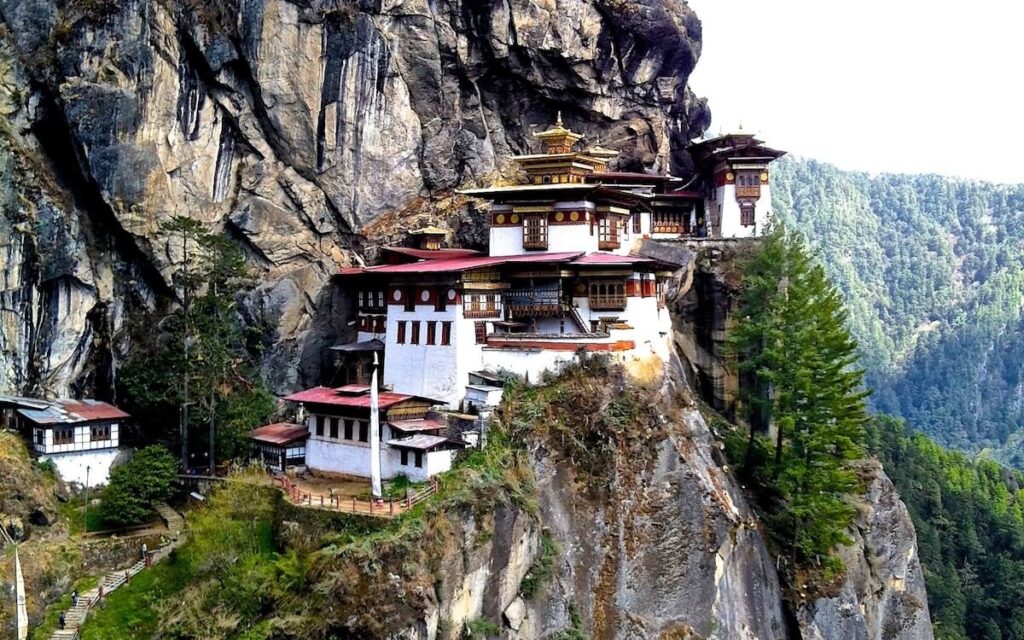
The Taktsang Monastery, called Tiger’s Nest, is an iconic landmark of Bhutan. This temple clings dramatically to a cliffside high above the Paro Valley. To reach it, one must hike up the mountain for about 2 hours.
The trek offers stunning views and fluttering prayer flags along the way. Tiger’s Nest has huge cultural significance – it commemorates the cave where Guru Rinpoche meditated in the 7th century.
All the effort needed to reach Tiger’s Nest is worthwhile once you see this sacred Buddhist site perched atop cliffs. This destination portrays Bhutan’s breathtaking beauty, adventurous spirit, and deep faith.
Final Say
And those are all the interesting facts about Bhutan! It’s got epic mountain peaks, cheerful people in funky robes, spicy food that’ll burn you up, and ancient temples clinging to cliffs.
Bhutan sounds like a fairy tale place. But it’s a real country doing things its own way. We hope you enjoyed learning about this one-of-a-kind kingdom. Bhutan being different is incredible!
Posted on